
All categories
Featured selections
Trade Assurance
Buyer Central
Help Center
Get the app
Become a supplier

(8010 products available)





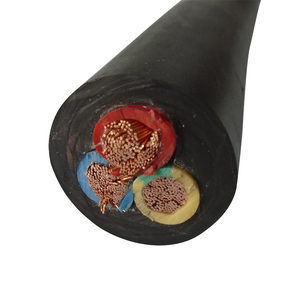
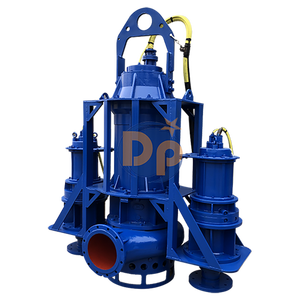
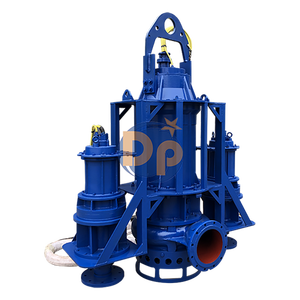


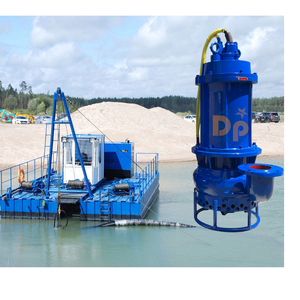





















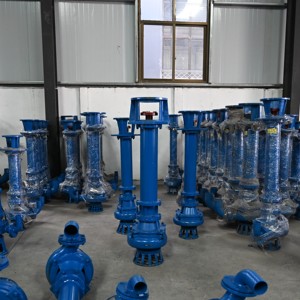










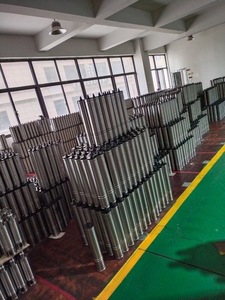


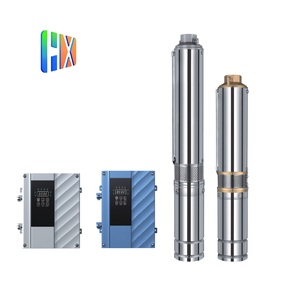





Submersible pumps are types of pumps that can be fully submerged in water, which is why they are referred to as submersible pumps. These specific kinds of pumps, especially made for industrial use, are quite versatile and can be applied as:
Single-Stage Submersible Pumps
This pump is designed to perform at low pressure and is very effective at transferring liquids from one point to another within the manufacturing process. Its structure is simple, comprising only one impeller, which makes it easy to operate and maintain. Due to its effectiveness, it remains popular in shallow well applications, wastewater systems, and general water transfer.
Multi-Stage Submersible Pumps
This pump type provides greater pressure and is able to transfer liquids over longer distances as well. It achieves this by having more than one impeller, thus increasing the water's elevation and allowing it to be used in deep wells. Multi-stage submersible pumps are highly effective in mine dewatering, high-rise building water supply, and irrigation systems.
Submersible Grinder Pumps
Equipped with strong blades, these pump types can easily grind and then pump out any solid waste material. This makes it suitable for lifting sewage or dirty water with large particles. Submersible grinder pumps are widely applied in sewage treatment plants, pit latrines, and any other system that requires the handling of solid water.
Solar-Powered Submersible Pumps
Powered by the sun, these pumps have the advantage of being energy-efficient and environmentally friendly, as they operate on solar energy. It is mainly used in areas that have no access to electricity. Solar-powered submersible pumps are widely used in rural agriculture, livestock watering, and solar water supply systems.
Submersible Well Pumps
These pumps are designed to ensure that they can deliver water from deep wells, where the water table is extremely deep. The entire pump is housed within the well casing, and the motor is sealed to prevent water from entering. Submersible well pumps are used exclusively for residential and commercial water extraction and deep well drilling.
Water and Wastewater Management
Submersible pumps play a key role in water and wastewater treatment processes. They are used in every step of the process, from the initial extraction of water to the treatment of wastewater.
Agriculture
Submersible pumps are used extensively in agriculture to ensure the right levels of irrigation. They help in drawing water from wells or underground sources to irrigate large agricultural fields. This helps maintain crop production, especially in dry areas.
Construction
These pumps are commonly used in construction to handle dewatering jobs at mines and during the building of new structures. They remove excess groundwater from construction sites to keep conditions dry so that building work can carry on without any hitches.
Industrial Operations
In industries, especially manufacturing plants, submersible pumps are used to transfer various kinds of liquids. They are versatile tools that can be applied as diesel submersible pumps and are able to pump chemicals, fuels, and even oily substances while ensuring workplace safety.
Mining
In mining operations, these pumps help to remove large quantities of groundwater and keep the mining pits dry so that work can proceed. They also help boost available water used in mineral processing.
Fire Protection Systems
Most fire protection systems, especially in commercial buildings, incorporate submersible pumps to ensure that they always have a standby source of water in case of fire outbreaks. These pumps are vital in providing the water pressure needed for fire suppression.
Fishing Industry
Submersible pumps are used in the fish farming or aquaculture industry to maintain the right acidity and oxygen levels in fish farming ponds. They help move, mix, and keep the water in the right condition for optimum fish growth.
Hydraulic Material Specifications
Submersible water pumps are made from different strong materials, such as hydraulic iron, bronze, stainless steel, and nitrile rubber (NBR). These materials are specifically designed to withstand the many corrosive and abrasive effects of water and other liquids while ensuring longevity.
Impeller Design
Impellers are thus designed with either open, semi-open, or closed features, each suitable for particular tasks. Open impellers are great for fluids that have large particulates, semi-closed for fluids with small suspension solid particles, and closed impellers for high-viscosity fluid that needs to be pumped.
Motor Specifications
Submersible pumps are powered by electric motors, which are usually constructed with efficiency-rated, 60 Hz/50 Hz frequency, and several horsepower ratings. Motors are hermetically sealed to prevent the entry of water and hence keep the rotating parts within the motor free from dampness.
Discharge Size
The discharge sizes of these pumps range from small 1-inch to as large as 6 inches, depending on the specific model and application. This corresponds to the diameter of the pipe through which the fluid is discharged from the pump.
Rated Flow and Head
Flow rate refers to the volume of fluid the pump can move per unit of time, usually expressed in gallons per minute (GPM) or liters per minute (L/m). Head is the height at which the pump can raise fluid, measured in both feet and meters. All these are important factors when selecting a pump for any application.
Preparation of Borehole or Sump
Ensure that the borehole or sump is properly constructed and finished to accept the installation of the submersible pump.
Lowering the Pump
Attach a suitable lifting mechanism to the pump so that the pump can be lowered steadily and in a balanced manner into the borehole or sump.
Electric Cables and Piping
Install all necessary pump delivery pipes and electrical power cables before the pump is lowered to the required depth for operation.
Securing the Pump
Once the pump reaches the right depth, secure it by connecting the delivery pipe with the specified coupler and the cable.
bearing
Seal off the pump power cable joint with heat-shrinkable or PVC insulating tape. Then make a water-tight joint using polyvinyl chloride (PVC) glue.
Power On
Always ensure that the motor control box is connected to the power supply and switch on the main control and overload circuit breaker.
Starting the Pump
Turn on the pump and check that the starting current does not exceed the allowable rate. Ensure there is no noise from the pump.
Testing Functionality
It is important to test the water must coming out of the delivery pipe for at least 10 minutes before starting any further task.
Check Parameters
Continuous checking of discharge water, power consumption, and current ampere is needed to determine the parameter status of the pump.
Monitoring
It is advisable to always monitor voltage, pressure, and other functions frequently just to avoid a situation where something goes wrong when least expected.
Traditional Maintenance Work
No significant maintenance is required, but it is necessary to replace the pump parts as recommended. Insufficient maintenance will result in pump failure and possible water shortages.
Shaft Seal Replacement
Drain the pump house first. Loosen the pump delivery pipe and remove the motor cable from the terminal. Detach the pump check valve and lift the pump out. Replace the lower bearing and shaft seal and reattach the pump components.
Centrifugal Impeller Damage
The presence of sounds and other indications that suggest damage is caused by wear or accumulation of debris that has been allowed to pass through the impeller causes the anti-block device to jam. Repairing the damage by having the impeller replaced is the only way out.
Risk Assessment
Identifying potential hazards related to working with submersible pumps, including electrical risks, mechanical dangers, and exposure to potentially hazardous liquids. Assess the likelihood and impact of these risks on health and safety.
Emergency Procedures
Document and ensure everyone's aware of emergency procedures, including evacuation plans, first-aid measures, and how to deal with pump-related incidents. Install automatic on/off submersible water pumps to improve safety.
Proper Training
All personnel working near or with submersible pumps should be adequately trained in operation, maintenance, and safety procedures. This includes understanding the pump's specific features, hazards, and the correct use of personal protective equipment (PPE).
Personal Protective Equipment (PPE)
Always use appropriate PPE, such as gloves, goggles, and safety suits, to protect against possible physical or chemical harm when handling these pumps. Submersible pumps dealing with hazardous liquids might require additional protective gear.
Electrical Safety
Since submersible pumps work with electrical components, it is important to follow electrical safety procedures. Only use pumps that are efficient and have residual current devices (RCDs).
Regular Inspections
Conduct and document frequent risk assessments and safety inspections of the workplace and pumps. Identify and correct potential safety hazards, and ensure all the equipment is in good condition to avoid accidents.
Maintenance Checklist
Prepare a checklist that includes safety activities related to maintenance, such as the evaluation of the pump for possible defects and wear and tear, as well as ensuring the electrical and mechanical parts do not have anything that can be potentially harmful. It is also important to schedule frequent maintenance to reduce workplace accidents.
A1: Submersible pumps are mostly submerged within the fluid, producing a lesser noise compared to centrifugal pumps that are solely above the fluid producing so much noise as an echo. The work is done inside the fluid with the help of a built-in motor.
A2: Submersible pumps can therefore be made to run continuously without damage as long as the well has adequate water to cover the pump against overheating. Pumps were meant to be immersed in their liquids for long periods of time.
A3: Submersible pumps are designed to operate while fully submerged, and running them when dry is harmful. Operational instances where there is insufficient water to fully submerge the pump may cause overheating and damage.
A4: If left in water for too long, the submersible pump will begin to corrode some parts and sooner or later accumulate contaminants within the intake, leading to potential damage. Adequate maintenance during lengthy immersion must be practiced.
A5: Yes, a 12v battery can run a submersible pump, which makes it portable and used in fishing boats that come with batteries.
A factory submersible pump is designed with several stages of the pump in order to push water up to great heights and make it possible for water to travel over long pipelines.